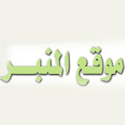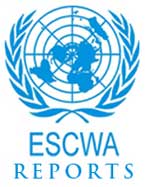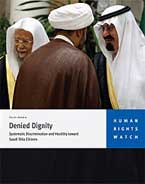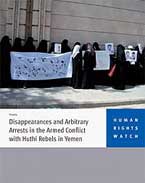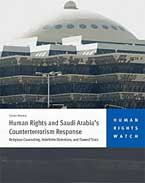Divided We Survive: A Landscape of Fragmentation in Saudi Arabia
Dr. Ondrej Beranek
Since the foundation of the Kingdom of Saudi Arabia, there has always been much talk about its incoherent composition and fragile political stability. The Saudi power balance has truly faced problems since the very moment the state was created, and its political system has failed to accommodate the need to change and evolve. Yet, the Saudi kingdom constitutes one of the most durable regimes in the Middle East. The ruling family survives despite many voices of dissatisfaction with the current status quo, and it skillfully exploits the fragmentation of the nation to navigate the difficult waters of the Middle East. In doing so, it confirms the thesis of a famous medieval Arab historian, Ibn Khaldun (1332–1406), who described the ideal ruler as someone able to manage the feelings of different groups and portray himself as an indispensable mediator.1 The Saudi rulers project themselves as worthy to be obeyed precisely because, in their own eyes, they embody the unity of the nation.
The purpose of this paper is to survey the fragmented Saudi landscape and describe the principal actors, along with their varied development and goals. The discourse of these actors, as well as their ability to bring about any real change, is shaped by various interests, events, and circumstances—not least among them that tensions in Saudi Arabia stem from political and religious differences as well as regional ones. The divisions that contribute to the fragmentation of the nation can be loosely divided into four major kinds: Sunni political activism (which itself takes on many forms, from moderate voices to militant Jihadi ideologies), liberal criticism, Shiite minority agitation, and tribal and regional politics.2 (The word “loosely” needs to be emphasized, since the situation is naturally a complicated one, and these actors oftentimes change affiliation during their ideological development.)
In general, emerging Islamist groups seek the complete transformation of Saudi socioeconomic and political life along Islamic lines, together with the imposition of a stricter Salafi value system on the government and the public. The modernist, liberal camp hopes for changes in the political and juridical spheres, more government attention to Western-style human rights, and greater political representation for themselves. The liberals also challenge the sacrosanct nature of the alliance between the ruling family and the ulama that has lasted since the 18th century. The Shiites desire full recognition of their status and integration into the political landscape; and finally, there are various tribes and regions that oppose the rule of Najd. All of these actors have only a limited space within which to operate, and once they cross certain boundaries and become intolerable to the regime, they are curbed. It is also important to say that these groups often have grievances not only with the regime, but with each other.
Sunni Political Activism
Although political Islamism has become a common tool of protest against state authority in the modern history of the Middle East, in the case of Saudi Arabia it can seem rather paradoxical. There, protests from domestic Islamist groups are directed against a regime that is built on Islamic foundations and, according to its own interpretation, rules in full accordance with Sharia and applies it to every sphere of life and policy. Indeed, the Saudi regime has invoked Sunni religious rhetoric to legitimate itself since its very beginnings. This, however, has proven to be a double-edged sword, as it has at the same time encouraged Islamic opposition groups to debate the range and appropriateness of Islam’s integration into Saudi politics.
Sunni political activists include both nonviolent and violent actors. The beginning of the moderate Islamist challenge is traditionally traced to two petitions addressed to King Fahd by groups of religious scholars and intellectuals in the aftermath of the Gulf War in May 1991 and September 1992.3 These petitions called for implementation of stricter Islamic norms in the public sphere. The government was forced to introduce a number of reforms, but they were to a large degree only cosmetic and served to further the consolidation of its own power— especially as they were instituted alongside the application of direct state violence against outspoken members of the opposition. Among these were two of the most charismatic preachers from a group of younger, radical ulama known as the Shuyukh al-sahwa ‘l-islamiyya (Sheikhs of the Islamic Awakening): Safar al-Hawali (b. 1950) and Salman al-Awda (b. 1955).
Al-Sahwa ‘l-islamiyya
The main manifestations of al-sahwa ‘l-islamiyya appeared in turbulent years of religious activism which swept Saudi universities in the 1970s and 1980s.4 But the roots of this activism go much deeper—mainly to the 1960s, when Saudi Arabia started to open itself to broader contacts with the outside world. During this period, Saudi Arabia also opened its borders to thousands of refugees from Egypt, Syria, Iraq, and Palestine who were being persecuted in their countries or regions of origin. Many of them were religiously oriented and belonged to the Muslim Brotherhood, and they brought with them radical ideas inspired mainly by Sayyid Qutb, the leading ideologue of the Brotherhood. Owing to their education, these refugees were a short-term blessing for Saudi Arabia. At a time when Saudi Arabia was in need of teachers and the level of illiteracy had reached 85%, they quickly occupied crucial positions in administration and education. The kingdom also resorted to the political Islam of the Brotherhood as a weapon in its ideological clash with influential concepts of Nasserism and Baathism. Saudi Islamists who were part of the Sahwa movement synthesized traditional Salafi teaching, based on theological issues, with the modern positions of the Muslim Brotherhood, which concerned itself mainly with political questions.
The ranks of Sahwists were filled with both religious scholars and laymen—scientists, doctors, and academics. They were united by a common belief in the duty of every Muslim to publicly avoid forbidden things as defined by Islam—and to challenge the political authority if its rule conflicted with Sharia. However, the Sahwa movement is by no means a cohesive organization. There are within its ranks groups identifying themselves with the two main wings of the Muslim Brotherhood—those following the teachings of Hasan al-Banna and Sayyid Qutb—and also followers of other sheikhs, such as Muhammad Surur Zayn al-Abidin. The movement received another impulse for radicalization in 1994, when the regime arrested its two prominent clerics, al-Hawali and al-Awda.5
After September 11, 2001, the Sahwists were blamed by their liberal opponents for misusing Islam, radicalizing Saudi youth, and creating a breeding ground for the ideology of jihad. In an effort to counter these charges, some Sahwists turned for support to the Saudi regime, and some of them also served as mediators between the state and radical Islamists. Al-Hawali, for example, took advantage of his popularity to reason with some hardliners and convince them of their doctrinal errors and misconduct. Today, it seems that after decades of mutual conflict, the Sahwists and the government have found common ground. The Sahwists accepted the schism between secular state and religious public space and stopped accusing the government of departing from the tents of Islam. In exchange, the government provided them with more freedom of speech and with access to the media. However, the relative moderation of many Sahwists paved the way for a new generation of radical clerics who have no hesitation in supporting armed struggle and criticizing the regime.
Militant Jihadi Ideologies
Saudi Arabia has also been facing the challenge of a more global Islamist opposition; the group associated with Osama bin Laden, and a couple of thousand Saudi Jihadists returning from the Afghan war. This group did not hesitate to label the Saudi regime as profane and its leaders as infidels; they challenged the legitimacy of the existing Saudi state order and insisted on their own interpretation of Islam. Both Sahwist and Jihadi interpretations are fully embedded within Salafi discourse, but the Jihadi tendencies stand out in three areas: uncompromising rejection of the Saudi regime, belief in violent resistance toward the West, and selection of the legal means and targets of jihad.
After 9/11, the relationship between Sahwists and Jihadists significantly worsened. During the 1990s, Jihadists had in many instances looked to Sahwists for inspiration. But after the Sahwists’ expressed open support for the regime, Jihadists denounced them for servility to the government and turned to younger scholars with hardline attitudes similar to their own who could provide them with a rationale for their own solution—a revolutionary mixture of violence and Islam. It manifested itself most brutally in the murderous campaign the group conducted between 2003 and 2005, which coincided with the return of many hardliners from Afghanistan after the fall of the Taliban regime in November 2001. This newer generation of Jihadists returned to Saudi Arabia with direct orders from al-Qaeda’s leadership to launch attacks against American targets. The bloody events that followed were perpetrated by an organization called al-Qa‘ida fi ‘l-jazira ‘l-arabiyya (al- Qaeda in the Arabian Peninsula).6
It is clear from events in Saudi Arabia that this sort of opposition can be organized and can claim supporters from among high-ranking religious scholars as well as military professionals. On the other hand, the Saudi regime, as the custodian of the Islamic holy sites, still has more legitimacy among Muslims than Bin Laden and his ilk. The regime also enjoys access to far better financial resources that enable it to control the situation. At the same time, it is also clear that al-Qaeda benefited from the support of many official clerics: Some might have been critical of al-Qaeda’s attacks on domestic targets, but others provided sanction for its efforts in Iraq. Some religious authorities, as a part of their long-term campaign against the Shiites, also openly supported attacks on the Shia minority and organized conferences to warn against the threat posed by the Shiites in Iraq and by Iran.7
Liberal Criticism
Contrary to popular belief, Saudi Arabia has always been home to some amount of liberal impulses.8 Today there is quite a large group of reform-minded liberals, many of them educated in the West, who make up a coalition of intellectuals and businesspeople as well as moderate religious leaders. Unfortunately they are not influential enough, and many of them are repeatedly being persecuted or imprisoned. Yet, it would be a mistake to neglect this trend and to equate Saudi Arabia with conservative, Salafi Islam. Salafiyya may be the principal legitimizer of the Saudi regime, but there are other social and religious trends, both old and new, that influence the dynamics of the Saudi political scene.
A clear manifestation of liberal activism came in February 1991, when 43 prominent intellectuals wrote an open letter to King Fahd. They demanded, among other things, the establishment of Majlis al-shura, the Consultative Council which had been promised for many years; restriction of the power of the religious police; modernization of the legal system; and equal rights for everyone, including women. The authors of the letter made clear that they envisioned such changes occurring within the framework of Islamic law and that they did not seek destabilization of the regime. Their letter was ignored by the government, however, and from the side of Islamist activists came testy criticism. Similar demands were made again after 9/11, which was the main turning point for the liberals. Open protests and bold statements came to a head in the first half of 2003, which was later called “Riyadh’s Spring.” And as in the case of other such episodes in different parts of the world, it was followed by a wave of arrests and restrictions.
The liberal movement can be loosely divided into two factions, which differ in emphasizing religious and social reforms, on the one hand, and political reforms, on the other. The first group is composed of reformists who mainly criticize Saudi social and religious conservatism. According to them, political reform is impossible without modernization of social and religious conditions. The other wing comprises reformists who focus primarily on changing Saudi political conditions. Many of them— including two prominent figures, Abdallah al-Hamid and Abd al-Aziz al-Qasim—originally belonged to the Sahwists. They publicly propagate the idea of creating a constitutional monarchy alongside an elected parliament and establishing an independent organization for the protection of human rights.
The Saudi liberal movement is fragmented; it does not have any foreign sources of income; and it is wholly dependent on the Saudi ruling family for the implementation of its program. And the regime is very unlikely, in the near future, to exchange its traditional alliance with the official Salafi establishment for the support of the liberal movement. Saudi Arabia is, in fact, the perfect example of a regime that skillfully makes use of reforms only to further consolidate its power.9
Shiites
Another important voice of dissent is presented by the Saudi Shiite minority.10 The Shiites make up between 5 and 10 percent of the entire population (between 1 and 2 million people) in unofficial estimates, or up to 20 percent according to the Shiites themselves, and most of them live in the Eastern Province. The Eastern Province contains a significant number of oil resources, which account for some 90% of the state’s income; nonetheless, this region is one of the poorest parts of the country. The Shiites have suffered since the establishment of Saudi Arabia at the beginning of the 20th century, not so much on account of the attitude of King Abd al-Aziz Al Sa‘ud (1876–1953), founder of the present-day kingdom, but because of the demands of the radical clerics whose hatred toward Shiites is deeply embedded in their interpretation of Islam. Saudi Salafists still view the Shiites as polytheists and unbelievers. This dogma was also for many years part of official school textbooks, and similar discourse has influenced many generations of students.
The Shiite opposition in Saudi Arabia has undergone various stages of development, characterized specifically by a change in its discourse—but it has never posed a real threat to the regime. In the 1970s and 1980s the Shiites spoke a language of militancy and called for a revolution, but in the 1990s they began to demand democracy, pluralism, and equal rights. The Saudi Shiites were significantly energized after the Islamic revolution in Iran in 1979, which largely inspired their own uprising in late November of the same year—an event known to Shiite activists as the Intifada (uprising) of the Eastern Province.11 Although the Saudi Shiites acknowledged Ayatollah Khomeini as a political inspiration, many of them did not consider him to be a religious authority. They found an important ideological source in an organization called Harakat al-risaliyin al-tala‘i‘ (literally “the Movement of Vanguards’ Missionaries”), which was established in 1968 in the Iraqi city of Karbala under the auspices of marja‘ al- taqlid (religious authority) Sayyid Muhammad Mahdi al- Shirazi.12
At the end of the 1980s, a purely Saudi Shiite organization called Munazzamat al-thawra ‘l-islamiyya (Organization of Islamic Revolution), which was established after the Intifada of 1979, went through a fundamental change: It gave up its radical ideology, cut its ties with the Iraqi organization, adopted moderate discourse, and began to focus on peaceful change of the Saudi political system. The leadership made this strategic decision out of a conviction that the Iranian revolutionary way was unfeasible in their situation. Events in the region and a change in geopolitical conditions—the end of the Iraq-Iran war, the disintegration of the Soviet Union—served as additional incentives. The organization even changed its name to al-Haraka ‘l-islahiyya (Reform Movement) in order to get rid of its revolutionary image and become a recognized actor in the Saudi political arena. By doing so, it implicitly acknowledged the status quo in the country.
The main spokesman and representative of the Saudi Shiite movement in its current, more moderate incarnation has been Sheikh Hasan al-Saffar (b. 1958), who was able to a large degree to assuage the more radical fractions.13 In 1990, he published a book called al-Ta‘addudiyya wa ‘l-hurriyya fi ‘l-islam (Pluralism and Freedom in Islam), which substantially influenced the future discourse of the Shiites. He supports the idea of reconciliation between Shiites and Sunnis and calls for a shift from the revolutionary rhetoric of Khomeini to moderate action and a pragmatic stance. Today, al-Saffar represents one of the few voices publicly calling for tolerance, and propagating civil society and a political system based on free elections and freedom of speech.
In spite of al-Saffar’s efforts, however, the Shiite community is not unified. Although al-Saffar’s camp may represent the majority view, on the other end of the spectrum stands Saudi Hizballah, established in 1987. In 1988 and 1989, Saudi Hizballah led a couple of attacks on oil infrastructure and also murdered Saudi diplomats in Ankara, Bangkok, and Karachi; in 1996 its adherents participated in the bombing in the Saudi city of al-Khubar. Some of its members went through training in Iran, and also in Iranian training camps in the Biqa‘ valley in Lebanon. In addition to these two fractions, there are also smaller groups of traditionalists who look at the Saudi regime with suspicion and do not intend to become part of any reconciliation talks.
At the beginning of the 21st century, Saudi Arabia seemed determined to stop the brutal campaign against its Shia community, which in previous decades had resulted in hundreds of Shiites being jailed, executed, and exiled. Such a liberal move, however, could easily be understood as merely part of a new campaign aimed at improving the image of Saudi Arabia in the West. Besides, the official Salafi teaching, which does not tolerate any other interpretations of Islam, will hardly bless any greater integration of Shiites into the political and religious system. The radical representatives of Saudi Salafiyya have made it clear that they still consider the Shiites to be unbelievers, and they continue to publish religious edicts sanctioning their killing. At the end of 2006, for example, several dozen Saudi clerics along with their counterparts in Iraq circulated a petition inciting an intensification of sectarian violence against the Shiites. While the Saudi regime usually remains silent in the face of such calls for violence, the official religious establishment assumes a slightly different attitude. They do not think the Shiites should be killed, expelled, or converted by violence; instead, they prefer that the Shiites renounce their “fallacious” beliefs voluntarily and embrace “the right path” of Islam.
Tribal and Regional Divisions
The formation of national identity in Saudi Arabia has three aspects. The first is based on the consolidation of the core of the nation around the ruling family, mainly through a network of relations based on tribal and regional origins. The second is the development of an institutional framework based on an expansion of the state’s bureaucratic apparatus, which was facilitated by oil wealth. And the third aspect of this process lies in the creation of a national political culture, which to a large degree is based on the heritage of Najd, the central region of Saudi Arabia: its traditions—most visible in its distinctive style of clothing—and its specific interpretation of Islam.14 Consequently, every citizen of Saudi Arabia takes on more than one identity. Individuals identify themselves according to their regional origin (Najd, Hijaz, and Asir, among others), their religious allegiance (Sunni or Shiite, in the broad sense of these words); and finally their tribal affiliation. Which of these identities is dominant at any given time is largely determined by momentary external conditions. Sometimes it is even necessary to suppress one or more of these identities.
The greatest regional tension has traditionally been between Najd and Hijaz. People of Hijaz, who feel particularly connected to the holy places of Mecca and Medina, have probably the most strongly articulated identity of any regional grouping. Their place of origin affords them the feeling of being a chosen people and also provides them with special status in the eyes of other Muslims; but it also alienates them from the Saudi state, which invokes different narratives of the history of the Arabian Peninsula.15 Over the centuries, the inhabitants of Hijaz also created many rituals and ceremonies which further enhance their sense of superiority. Most of the official Salafi clerics look down on these rituals and in many instances consider them to be un-Islamic.
Although the opposition in Saudi Arabi today is organized principally on Islamist foundations, it is blood and tribal solidarity (asabiyya qabaliyya) that has been for centuries the key to control over the country. Individuals have always been loyal only to their own clan and tribe (Tamim, Utayba, Qahtan, Anaza, Shammar, or any of several dozen other)— loyalty to larger units has always been unstable and has been based mainly on financial interests—and have never identified out of any national pride with the Arabian peninsula. Each of the major Saudi tribes has members in the tens of thousands, and some of them, especially Shammar, have a long history of feuds with the ruling family. The importance of tribal leaders has nevertheless been reduced by the flow of oil wealth. Today, tribal leaders are formal employees of the Ministry of the Interior and are given the responsibility of solving problems within their tribes.
Islamist opposition, not to mention Islam itself, has not been able to break up the tribal structure of Saudi society. Indeed, a lot of people in Saudi Arabia refuse to identify themselves as Saudi citizens and claim a much more noble origin than that of the ruling family. The only factor seriously threatening Saudi tribalism is continuing urbanization and the subsequent loosening of tribal affiliations. Traditional tribal leaders and Islamists have one thing in common: They have no formal organization to protect their interests. Beyond this similarity, the tribes may wish more rights for themselves and less for Salafiyya, but unlike the latter they do not doubt the legitimacy of the royal family. They also have always been generously rewarded for their loyalty to the regime by a system of benefits, as well as by confirmation of their status. This situation is unlikely to change, unless the financial reserves of the state dry up and the system of concessions, and the resulting loyalty, collapses.
Conclusion
The political stability of Saudi Arabia has always been doubted; but outside observers have overstated this issue for many decades. In fact, the modern Saudi state seems to have always been able to handle domestic political challenges.
The Saudi ruling family has employed various approaches vis-à-vis voices criticizing its legitimacy: partial accommodation of popular demands for reform; using religious rulings issued by the official ulama to delegitimize the objectives of disobedient groups; and deploying its financial resources to limit the impact of such voices, both within and outside the kingdom (e.g. by buying and influencing publishing houses or media). Besides, the current Consultative Council, whose members are appointed by the king, reinforces the loyalty of all members of the goverment and creates a system that is hardly penetratable by a person opposing the ruling family.
The number of committed followers of the various opposition groups—although the precise figures are subject to guesswork at best—can hardly exceed the number of adherents to the extended ruling family, with its intricate politics of clientelism and concessions. And the ability of these groups to change the system is severly limited, not only by their heterogeneity but by their conflicts with one another. The Saudi regime has also skillfully adopted the role of mediator between various social or political groups who express some sort of dissent from the political status quo: liberals and Islamists, the official religious establishment and young radical clerics, Sunnis and Shiites, people from different tribes and regions. The ruling family also skillfully exploits disputes between these groups—and sometimes fuels them—to help sustain their power. That these disputes are in fact sometimes created artificially and are not necessarily insurmountable was particularly clear from events that took place in 2002 and 2003, when the liberals and Islamists were able to cooperate, albeit only briefly.16
The lack of any deeper and more viable cooperation among various groups with alternative visions of power leaves them all defenseless against the regime’s successful strategies of fragmentation. As a result, in the foreseeable future the regime will remain stable, unless it allows some fissures on account of the thorny question of succession. The regime could also fail to maintain the standing that allows it to govern, should its behavior and its treatment of its own citizens become excessively violent or be in striking contradiction with Islam. But in light of the history of the regime and considering its experience with governing, this is very unlikely.
Endnotes
1 On the desirable qualities of dynasties and the basis of royal authority, see mainly chapter 3 in Ibn Khaldun, The Muqaddimah: An Introduction to History (London: Routledge & Kegan Paul, 1958). 2 A detailed account of some forms of Saudi dissent may be found in Mamoun Fandy, Saudi Arabia and the Politics of Dissent (New York: Palgrave, 2001), and Joshua Teitelbaum, Holier Than Thou: Saudi Arabia’s Islamic Opposition (Washington Institute for Near Eastern Policy: Policy Papers no. 52, 2000). For an updated survey, see International Crisis Group, “Saudi Arabia Backgrounder: Who Are the Islamists?” Middle East Report, no. 31 (Amman/Brussels/ Riyadh, September 21, 2004), and most recently, Madawi Al-Rasheed, Contesting the Saudi State: Islamic Voices from a New Generation (Cambridge: Cambridge University Press, 2007).
3 For an analysis of these petitions, see Hrair R. Dekmejian, “The Rise of Political Islamism in Saudi Arabia,” Middle East Journal 48, no. 4 (1994). 4 For the most detailed account of the movement’s intricate development and the many forms it has assumed, see mainly chapter 2 of Al-Rasheed, Contesting the Saudi State.
5 For more details about the work of these two clerics, see, for example, Fandy, Saudi Arabia, pp. 63–87; Gilles Kepel, The War for Muslim Minds: Islam and the West (Cambridge: Harvard University Press, 2004), pp. 142–196; and Toby C. Jones, “The Clerics, the Sahwa and the Saudi State,” Strategic Insights 4, issue 3 (March 2005).
6 For more details about this organization and an account of its activities, see Anthony H. Cordesman, National Security in Saudi Arabia: Threats, Responses, and Challenges (Westport, CT: CSIS/Praeger, 2005), pp. 112–36 and pp. 265–82. 7 Bruce Riedel and Bilal Y. Saab, “Al Qaeda’s Third Front: Saudi Arabia,” The Washington Quarterly (Spring 2008), p. 40.
8 See R. Hrair R. Dekmejian, “The Liberal Impulse in Saudi Arabia,” Middle East Journal 57, no. 3 (2003). 9 Gwenn Okruhlik, “The Irony of Islah (Reform),” The Washington Quarterly (Autumn 2005), pp. 153–70. 10 For more details about the Saudi Shiites, see Fouad Ibrahim, The Shi‘is of Saudi Arabia (London: Saqi Books, 2006). See also Fandy, Saudi Arabia, pp. 195–228; International Crisis Group, “The Shiite Question in Saudi Arabia,” Middle East Report (Amman/Brussels/Riyadh, September 19, 2005); Hamza Al-Hasan, Al-shi‘a fi ‘l-mamlaka ‘l-‘arabiyya ‘l-su‘udiyya (Beirut: Mu‘assasat al-baqi li-ahya ‘l-turath, 1993); Madawi al-Rasheed, “The Shi‘a of Saudi Arabia: A Minority in Search of Cultural Authenticity,” British Journal of Middle Eastern Studies 25, no. 1 (1998): pp. 121–38; and, most recently, Laurence Louër, Transnational Shia Politics: Religious and Political Networks in the Gulf (New York: Columbia University Press, 2008). 11 For a detailed description of this event, see Toby C. Jones, “Rebellion on the Saudi Periphery: Modernity, Marginalization, and the Shia Uprising of 1979,” International Journal of Middle Eastern Studies, 38 (2006): pp. 213–33. 12 For information about this organization, see Ibrahim, The Shi‘is of Saudi Arabia, pp. 73–104. 13 For more details about his teachings, see Fandy, Saudi Arabia, pp. 202–225, or Ibrahim, The Shi‘is of Saudi Arabia. 14 On the question of Saudi national identity, see Mai Yamani, Changed Identities: The Challenge of the New Generation in Saudi Arabia (London: Royal Institute of International Affairs, 2000), p. 29, p. 31, and elsewhere. 15 On the specific features of Hijazi identity, see mainly Mai Yamani, Cradle of Islam: The Hijaz and the Quest for an Arabian Identity (London: I.B. Tauris, 2004). 16 For more details about this short-lived cooperation, see Stéphane Lacroix, “Islamo- liberal Politics in Saudi Arabia,” in Paul Aarts and Gerd Nonneman, eds., Saudi Arabia in the Balance: Political Economy, Society, Foreign Affairs (London: Hurst & Company, 2005), pp. 35–56.





















